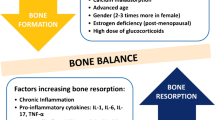Abstract
The effects of mesoporphyrin, a novel porphyrin derivative, on type II collagen-induced arthritis in mice were studied. Mesoporphyrin (10–30 mg/kg) and prednisolone (5 mg/kg; reference drug) reduced the incidence and severity of type II collagen-induced arthritis in mice, as assayed by clinical observation and histopathological studies. Although both agents inhibited type II collagen-induced delayed type hypersensitivity in arthritic mice, only prednisolone inhibited humoral immunity to type II collagen. The effects of mesoporphyrin on T cell dependent allergic inflammation were examined, in order to study the mechanism by which it inhibits arthritis. Staphylococcal enterotoxin B (SEB; superantigen)-potentiated collagen-induced arthritis and sheep red blood cell-induced delayed type hypersensitivity reaction were clearly inhibited by mesoporphyrin. Moreover, the superantigen-induced CD-25 expression on T cells was inhibited by mesoporphyrin. These results indicate that mesoporphyrin inhibits type II collagen-induced arthritis by inhibiting the activation of T cells.
Similar content being viewed by others
References
Wooley PH, Luthra HS, David CS. Type II collagen induced arthritis in mice. I. Major histocompatibility complex (I-region) linkage and antibody correlates. J Exp Med 1981;154:688–700.
Stuart JM, Townes AS, Kang AH. Nature and specificity of the immune response to collagen in type II collagen-induced arthritis in mice. J Clin Invest 1982;69:673–83.
Stuart JM, Cremer MA, Kang AN, et al. Type II collagen-induced arthritis in rats. Passive transfer with serum and evidence that IgG antibodies can cause arthritis. J Exp Med 1982;155:1–16.
Niver P, Susan H, Orzechowski RF, et al. Humoral and cellular immunologic aspects of adjuvant and collagen arthritis in rats. J Immunopharmacol 1986;8:347–70.
Mccune WJ, Trenthmam DE, David JR. Gold does not alter the arthritic, humoral, or cellular responses in rats with type II collagen-induced arthritis. Arthr Rheum 1980;23:295–306.
Dynesiums-trentham RA, Rowland D, Trentham DE, et al. Rat leukocyte inhibitory factor. Similarities to human LIF and generation by cells from rats with collagen-induced arthritis. Cell Immunol 1981;63:362–73.
Holmdahl R, Klareskog L, Wigzell H, et al. T lymphocytes in collagen II-induced arthritis in mice. Characterization of arthritogenic collagen II specific T-cell lines and clones. Scand J Immunol 1985;22:295–306.
Trentham DE, Dynesius RA, David JR. Passive transfer by cells of type II collagen-induced arthritis in rats. J Clin Exp Invest 1978;62:359–366.
Kakimoto K, Nakamura T, Onoue K, et al. The effect of antiddhesion molecule antibody on the development of collagen-induced arthritis. Cell Immunol 1992;142:326–37.
Takeoka Y, Naiki M, Suehiro S, et al. 2-Buten-4-Olide (2-B4O) inhibits type II collagen-induced arthritis in Lewis rats. Int J Immunopharmac 1993;15:803–10.
Fuchigami, H, Nishimura T, Kimura K, et al. Effect of actarit on type II collagen-induced arthritis in mice. Arzneim Forsch Drug Res 1994;44:64–8.
Griffiths RJ, Pettipher ER, Showell HJ, et al. Leukotriene B4 plays a critical role in the progression of collagen-induced arthritis. Proc. Natl Acad Sci USA 1995;92:517–21.
Herzog C, Walker C, Müller W, et al. Monoclonal anti-CD4 in arthritis. Lancet 1987;II:1461–2.
Herzog C, Walker C, Pichler WJ, et al. Anti-CD4 antibody treatment of patients with rheumatoid arthritis: I. Effect on clinical course and criculating T cells. J Autoiummunol 1989;2:627–42.
Goldberg D, Morel P, Bach J, et al. Immunological effects of high dose administration of anti-CD4 antibody in rheumatoid arthritis patients. J Autoimmunol 1991;4:617–30.
Horneff G, Burmester GR, Kalden JR, et al. Treatment of rheumatoid arthritis with an anti-CD4 monoclonal antibody. Arthr Rheum 1991;34:129–40.
Wendling D, Wijdenes J, Morel-Fourrier, et al. Therapeutic use of minoclonal anti CD4 antibody in rheumatoid arthritis. J Rheumatol 1991;18:325–7.
Reiter C, Kakavand B, Krüger K, et al. Treatment of rheumatoid arthritis with monoclonal CD4 antibody M-T151. Clinical results and immunopharmacologic effects in an open study, including repeated administration. Arthr Rheum 1991;34:525–36.
Kirkham BW, Pitzalis C, Panayi GS, et al. Monoclonal antibody treatment in rheumatoid arthritis. The clinical and immunological effects of a CD7 monoclonal antibody. Br J Rheumatol 1001;30:459–63.
Choy EHS, Chikanza IC, Panati GS, et al. Treatment of rheumatoid arthritis with single dose or weekly pulses of chimaeric anti-CD4 monoclonal antibody. Scand J Immunol 1992;36:291–8.
Lubbe PA, Reiter C, Riethmuller G, et al. Chimeric CD4 monoclonal antibody cM-T412 as a therapeutic approach to rheumatoid arthritis. Arthr Rheum 1993;36:1375–9.
Weinblatt ME, Coblyn JS, Austen KF, et al. Cyclosporin A treatment of refractory rheumatoid arthritis. Arthr Rheum 1987;30:11–7.
Yocum DE, Klippel JH, Dougherty S, et al. Cyclosporin A in severe, treatment-refractory rheumatoid arthritis: a randomizied study. Ann Intern Med 1988;109:863–9.
Stepien H, Kunert-Radek J, Pawlikowski M, et al. Inhibitory effect of porphyrins on the proliferation of mouse spleen lymphocytes in vitro. Biochem Biophys Res Commun 1991;174:313–22.
Yen A, Gigli I, Barret KE. Dual effects of protoporphyrin and long wave ultraviolet light on histamine release from rat peritoneal and cutaneous mast cells. J Immunol 1990;144:4327–32.
Musser MA, Fiel RJ. Cutaneous photosensitizing and immunosuppressive effects of a series of tumor localizing porphyrins. Photochem Photobiol 1991;55:119–23.
Nagai H, Nishiyori T, Daikoku M, et al. Immunopharmacological studies of sodium copper chlorphyllin. Jpn J Pharmacol 1983;33:819–28.
Nagai H, Kitagaki K, Kuwabara K, et al. Anti-inflammatory properties of zinc protoporphyrin disodium. Agents Actions 1992;37:273–83.
Courtenay JS, Pullman MJ, Mosdale B, et al. Immunization against heterologous type II collagen induces arthritis in mice. Nature 1980;283:666–8.
Trentham DE, Dynesius-trentham RA. Attenuation of an adjuvant arthritis by type II collagen. J. Immunol 1983;130:2689–92.
Nagai H, Takaoka Y, Mori H, et al. The model of arthritis induced by superantigen. Life Science 1994;55:PL233–57.
Lagrange PH, Mackaness GB, Miller TE. Influence of dose and route of antigen injection on the immunological of T cells. J Exp Med 1974;139:528–42.
Silverman ED, Isacovics B, Laxer RM, et al. Synovial fluid cells in juvenile arthritis. Evidence of selective T cell migration to inflamed tissue. Clin Exp Immunol 1993;91:90–5.
Author information
Authors and Affiliations
Additional information
accepted by M. Katori
Rights and permissions
About this article
Cite this article
Nagai, H., Takaoka, Y., Mori, H. et al. The effects of mesoporphyrin on experimental arthritis in mice. Inflamm Res 45, 293–298 (1996). https://doi.org/10.1007/BF02280994
Received:
Revised:
Accepted:
Issue Date:
DOI: https://doi.org/10.1007/BF02280994




